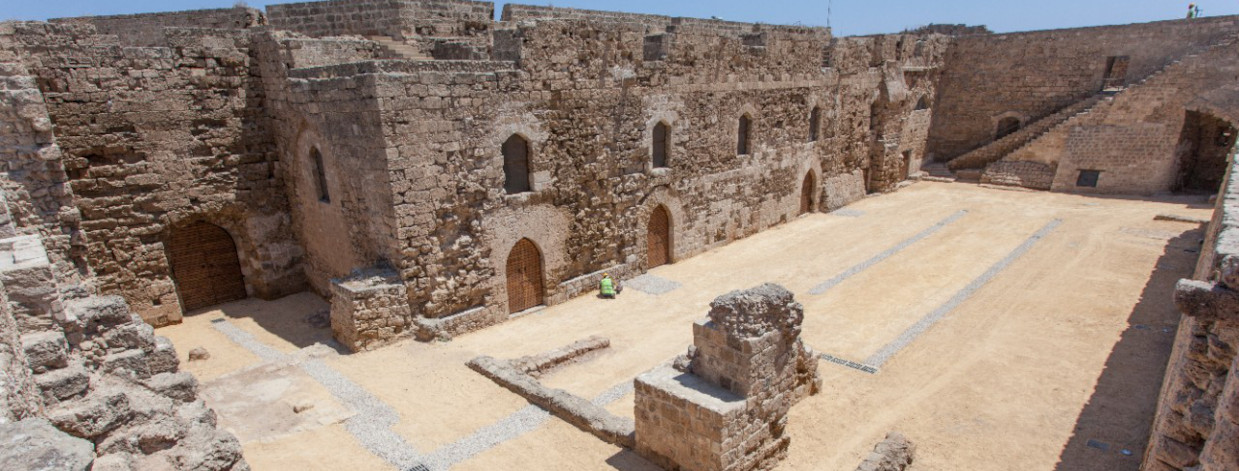Start Date: May 2014
End Date: July 2015
Type of Intervention: Conservation works
Total Project Cost: Approx. €1,305,000
ABOUT THE TOWER/CITADEL
An important monument in the history of Famagusta, Cyprus and the Mediterranean, the Othello Tower/Citadel forms the key defensive position for the city of Famagusta located at the apex of the city walls and acting as the protector between the port and the sea. The citadel consists of wall fortifications, connecting walls and four remaining towers (originally eight). These elements were in various states decay due to the ruin of entire walls and rib vaulting. The monument comprises of two structures – one inside the other. The outer Venetian fortifications that date from 1492 were constructed around an earlier Lusignan fortification, which dates from the 14th Century. Selected as part of the priority intervention projects of the Technical Committee on Cultural Heritage, its significance as well as its sense of age and mystery are evident walking through the portals of the citadel, with the Lion of Venice still presiding after hundreds of years. On-site visitors can find out more about the monument through a series of installation panels placed in the Great Gallery, explaining its history, values and the conservation process.
THE CONSERVATION PROJECT
The project, which started in May 2014 and was completed by July 2015, was the first heritage site in Famagusta to benefit from the work of the Committee.
A ‘Survey, Investigations, Assessment and Project Design study was carried out in 2012.
The aim of the study was first to identify the critical problems, research and understand the monument and then create the designs for:
- stabilising the monument
- protecting the elements that are most at risk while observing internationally recognised conservation standards
- creating a safe environment for the community and visitors
- accommodating disabled persons with an access path and toilet facilities
The works carried out focused mainly on emergency masonry stabilisation works to walls, arches and other unstable sections. Areas where losses/collapses had occurred over the years were strengthened. A proper drainage system was constructed to canalise and take away water, which was one of the most damaging causes of deterioration for the Tower/Citadel. New roof layers were installed with compatible materials to avaid future rainwater infiltration. Visitors’ information features were also provided as well as accessibility at ground level and sanitation facilities for persons with disabilities.
INAUGURATION NIGHT
The reopening of the Othello Tower/Citadel and completion of Phase 1 of the structural stabilisation and conservation works, was aptly celebrated by a theatre performance of the play which gave the structure its name – William Shakespeare’s Othello. The play was performed inside the castle itself by a bicommunal cast of both Greek Cypriot and Turkish Cypriot actors. One month after the conservation works were completed, the Technical Committee on Cultural Heritage chose the Othello Tower/Citadel as the venue for their first bicommunal event. The attendance of both Leaders, Nicos Anastasiades and Mustafa Akıncı, highlighted the importance of the monument not only as a major part of the island’s cultural heritage but as part of the confidence-building measures and ongoing peace process.
